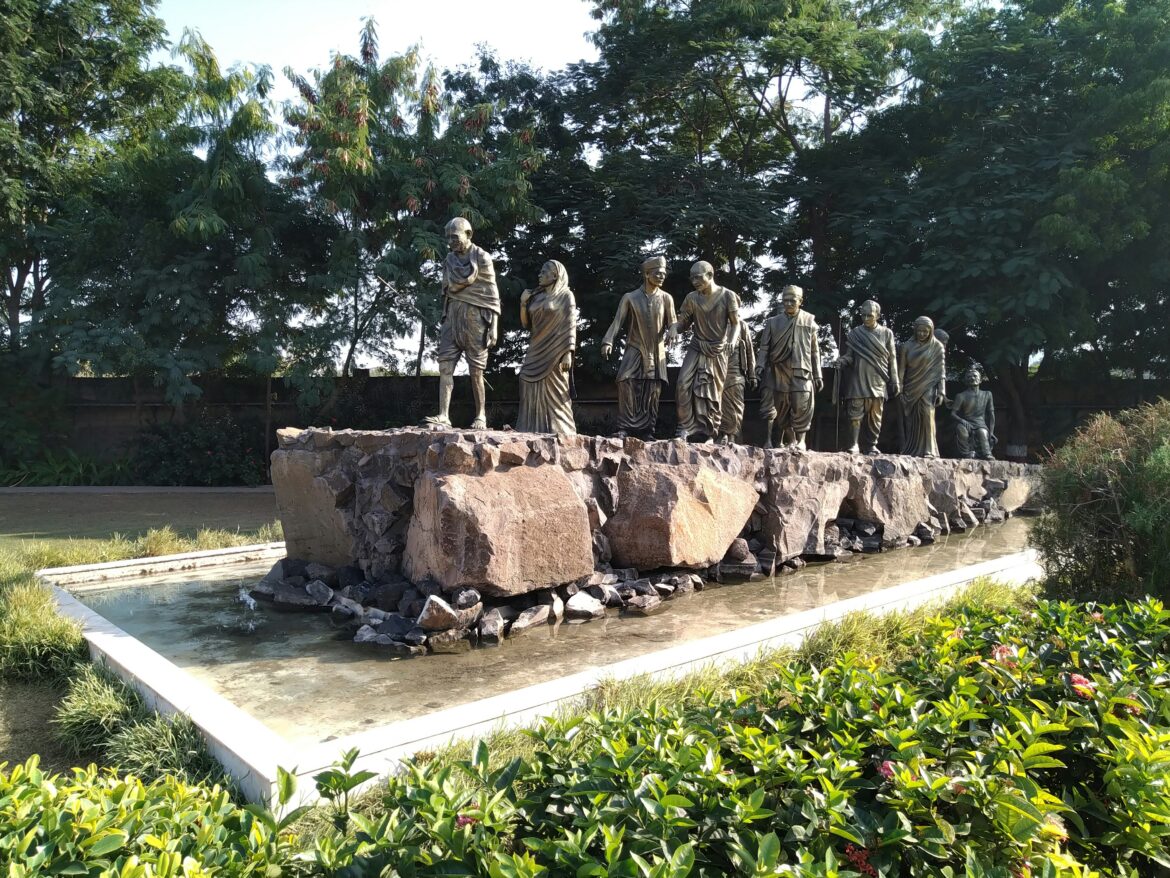The following article was first published in SpeakFreely’s Fearless For Freedom print issue, Tbilisi Georgia, April 2024.
The Salt March is a great example of non-violent mobilisation to protest an unjust government policy, and a universal inspiration for people to be patient and creative in their fight for freedom.
On March 12, 1930, at Sabarmati Ashram, Gujarat, Mahatma Gandhi, the leader of the Indian National Congress (INC), began the march alongside 78 followers. It was a symbolic protest towards the introduction of the British salt policies in India.
The governing British Raj had imposed a monopoly on salt production, making it illegal for Indians to produce or sell salt. The Salt Acts had introduced a complete control over the extraction of salt in India, which meant costly salt and other related products, and unjust extraction of Indian resources. From a libertarian perspective, this policy was both morally bankrupt and economically inefficient.
The march ended on April 5 in the coastal town of Dandi on the Arabian Sea. Gandhi and his followers had passed almost 390 kilometres on foot. Thousands of people joined the movement during the march, while Gandhi gave interviews, attracting global media attention.
Active non-violence
The protest itself was a mature and almost perfect (libertarian) reaction towards a public policy that was causing economic injustices. It was part of the tactic of Satyagraha: meaning ‘clinging or holding to the truth’ in Sanskrit, Satyagraha covers a strategy of mass civil disobedience against a robust and well-established occupier, through the methods of (active) non-violence.
Non-violence is usually associated with passiveness and inaction. However, to take another perspective, nonviolence can be an active strategy of agitating towards and enacting social change without relying on violent methods. It is a process that encompasses tools or phases such as education and capacities for addressing the truth; mobilisation and community-building around ideas; networking and chasing opportunities; and developing representation in political institutions.
Gandhi and the strategy of Satyagraha went through all of the phases and utilised all the tools for a social change. He never stopped educating masses and addressing the truth. At the same time, he developed communities of leaders and followers, while politically representing his strategy through the political party of Indian National Congress (INC). The finalisation of these social change processes was the establishment of an independent India in 1947, free from the rule of the British Empire.
Lessons from the Salt March
So what can libertarians learn from the Salt March and Gandhi’s non-violent active resistance?
Although libertarianism is a big-tent approach ideology with almost superlative moral and utilitarian justifications, there is an evident lack of sustainable strategies when it comes to the processes towards a free(er) society. The commonly accepted strategy of contemporary libertarianism is the Hayekian one. It traces the road towards more freedom with education through various educational tools to change the views of individuals on social issues, rather than influencing political elites. These educational activities are at the core of libertarian strategies, and Rothbard introduced a term covering them, which is educationism.
Even though educationism is a relevant strategy that ensures long term social change, the need for more significant and massive activism, inspired by community-building and political representation, is evident. It is challenging to develop a massive movement for social change, relying solely on educational methods, and the power of the truth by itself. The truth is evident. However, there is an emotional stimulus people need to experience, in order to perceive, organise and uncompromisingly fight for. People should be engaged in experiences to devote themselves to and acquire the power of the truth.
That being said, some creativity can be used regarding the methods and the tools for social change. Educationism could and should be updated with other methods that involve and enhance the feeling of being an active part of a larger community with a just goal. These communities are taking care of their members, and enabling the experiences needed for emotional identification with a movement.
Finally, people would like leaders to embrace the changes truly, reflect on themselves, and be more than courageous to stand for the idea when the right and tough time comes. These leaders are a true manifestation of the ideas in reality.
Gandhi was that type of leader, using his capabilities to manage non-violent activism to inspire billions in his country, and world-wide in a joint fight for freedom, independence, and flourishing.
